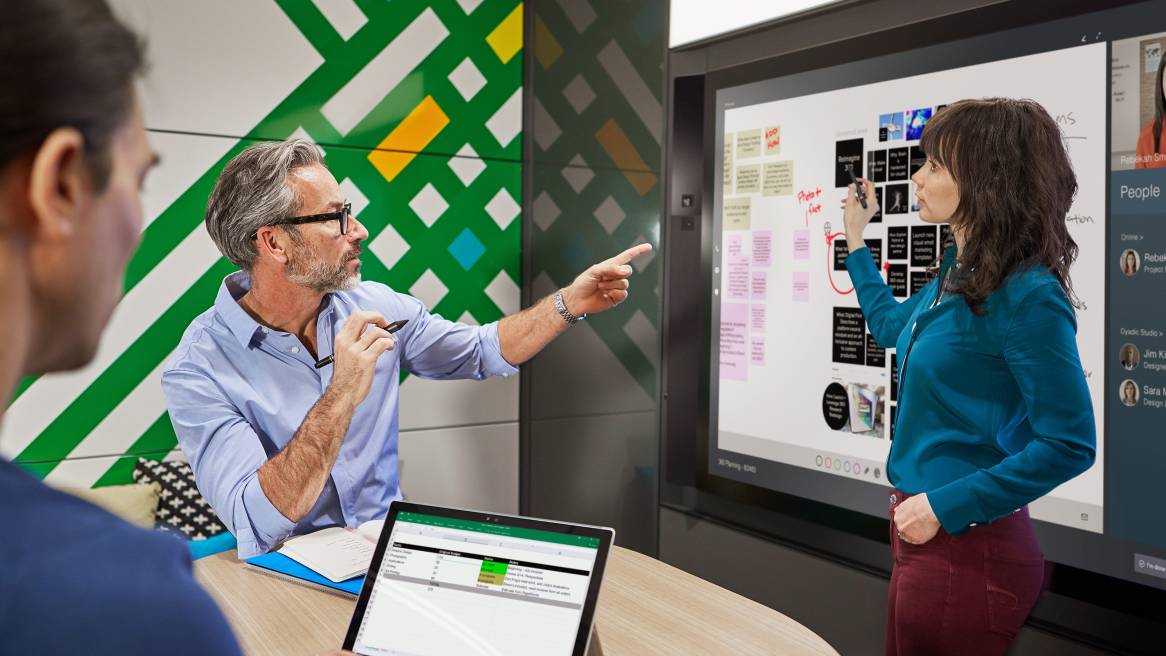Q+A with Microsoft: The Digital Advantage
Information technology professionals are helping lead digital transformations requiring new types of work.
In partnership with Microsoft, Harvard Business Review Analytic Services recently released new research around the digital economy. The study concludes the digital transformation is pervasive. “Companies that form their strategies now, shift resources to new digital initiatives, and redesign their organization and culture will have a distinct advantage,” the report states.
This change is being led in many organizations by a new type of information technology professional. 360 spoke with Rimes Mortimer, general manager of applied innovation at Microsoft, to get his perspective on this shift to new types of work and new ways of working within IT.
360: We see how big data is becoming woven throughout our lives. Have you seen an acceleration in companies who are not traditional technology companies embracing data as a means to growth?
Rimes: In today’s world, every company – regardless of industry – is on a journey to become a digital company. One of the key aspects of this digital journey is have access to more data than ever before. The most successful companies will not only have access to data – market, customer, operational – but they’ll derive unique, actionable insights from that data that helps them better serve customers, improve business operations and transcend current business models. This is a trend we’re seeing in both digital native companies and traditional businesses across industries like financial services, manufacturing, healthcare and government.
Decades ago, an innovative shoe design, a beautiful device or smartly designed software could lead a company to achieve market dominance for a long time. Now, we’re seeing micro revolutions every 12-18 months. As companies become digital, technology becomes central to everything they do. This is a major change where before technology was just a part of operations or infrastructure.
Decades ago, an innovative shoe design, a beautiful device or smartly designed software could lead a company to achieve market dominance for a long time. Now, we’re seeing micro revolutions every 12-18 months.
360: Do you see different kinds of skills people need now in IT to be successful? Is it more than coding or engineering skills?
Rimes: Modern IT pros have a big responsibility, and being successful in 2020 and beyond will require growth and mastery of new skills. Chief among these new skills is collaboration. IT pros will need a deeper understanding of how technology impacts different areas of business – operations, marketing, sales, supply chain – to determine how technology can empower these functions and ensure success. Digital transformation at its core is business transformation enabled by IT. Finding the intersection of business and technology will turn the modern IT pro into a ‘chief collaborator’ working across many groups.
Digital transformation at its core is business transformation enabled by IT. Finding the intersection of business and technology will turn the modern IT pro into a ‘chief collaborator’ working across many groups.

360: Have you seen a greater need for more creative thinkers and problem solvers among IT professionals?
Rimes: There are many elements that are vital to driving a successful digital transformation. The organization needs to embrace a clear vision, and the single most important criterion for a successful digital transformation is culture. It goes beyond IT to helping people embrace a new digital culture – embrace a world where everyone works in a networked, boundaryless organization.
In addition to that, the world economy is increasingly powered by ideas and creativity fueled by advances in the cloud, big data, connected things, advanced analytics and artificial intelligence. Creative ideas now have more power and more velocity than ever before, and they are reshaping the global economy. This is as true for IT as it is for other business functions.
360: Does this next generation of IT professionals need a different kind of work environment to support their best work?
Rimes: A company’s most important asset is its people. As digital transformation takes shape, business leaders must rethink how to empower employees to support the cultural and workforce shifts digital transformation brings.
The process starts with designing a workplace where every work style can thrive – one that harnesses digital intelligence to improve experiences and enables the flexibility of mobility, while keeping the organization, people and information secure. Doing this well requires leaders to rethink everything – the creative process, hierarchical models, workspaces and the technology they bring in to support employees’ work that allows for better collaboration, and new ways to work more effectively.
Doing this well requires leaders to rethink everything – the creative process, hierarchical models, workspaces and the technology they bring in to support employees’ work.
What we are seeing is the transformation of the work environment itself. Whether it’s through IoT (internet of things) sensors and new building technologies leveraging IP cameras, connected lighting, or intelligent elevators, the workspace itself can help people be more productive. The environment can help people more easily find the right workspace for them based on personal preferences, find a colleague on another floor, or even help initiate a meeting with minimal human intervention. IoT and cloud technologies combined with machine learning are also helping space managers and real estate departments gain new insights on space utilization ensuring that the workplace is optimized for human productivity.
For more information on the digital transformation underway within organizations, read The Race to Digitize in the latest issue of 360 Magazine.


